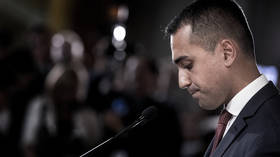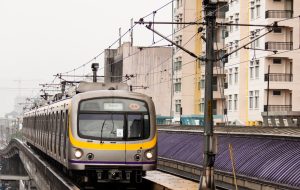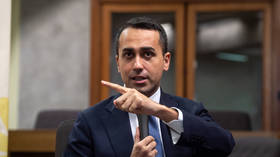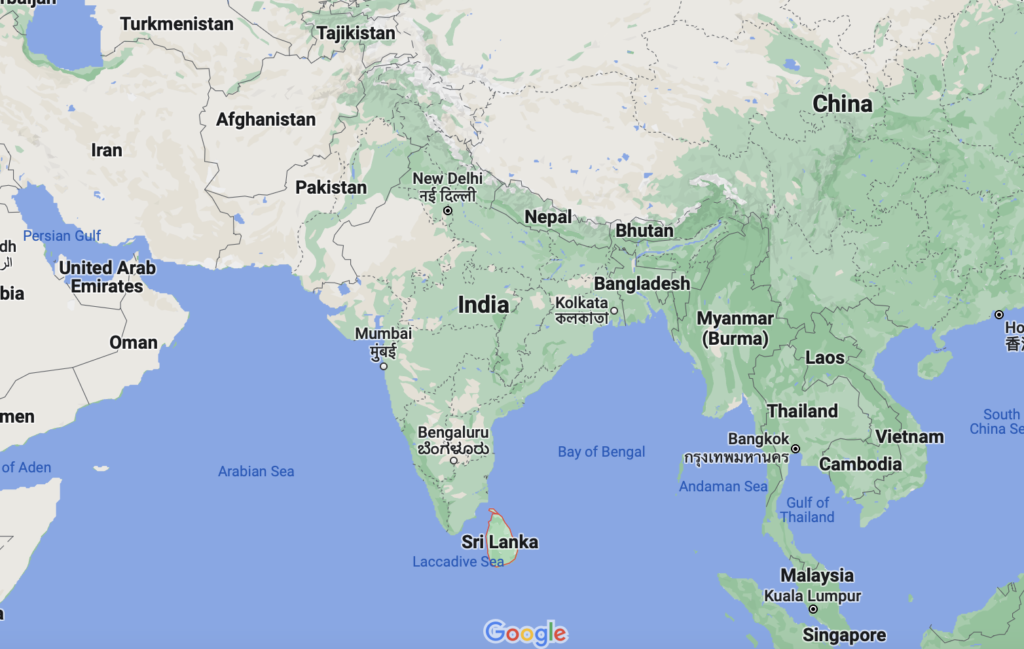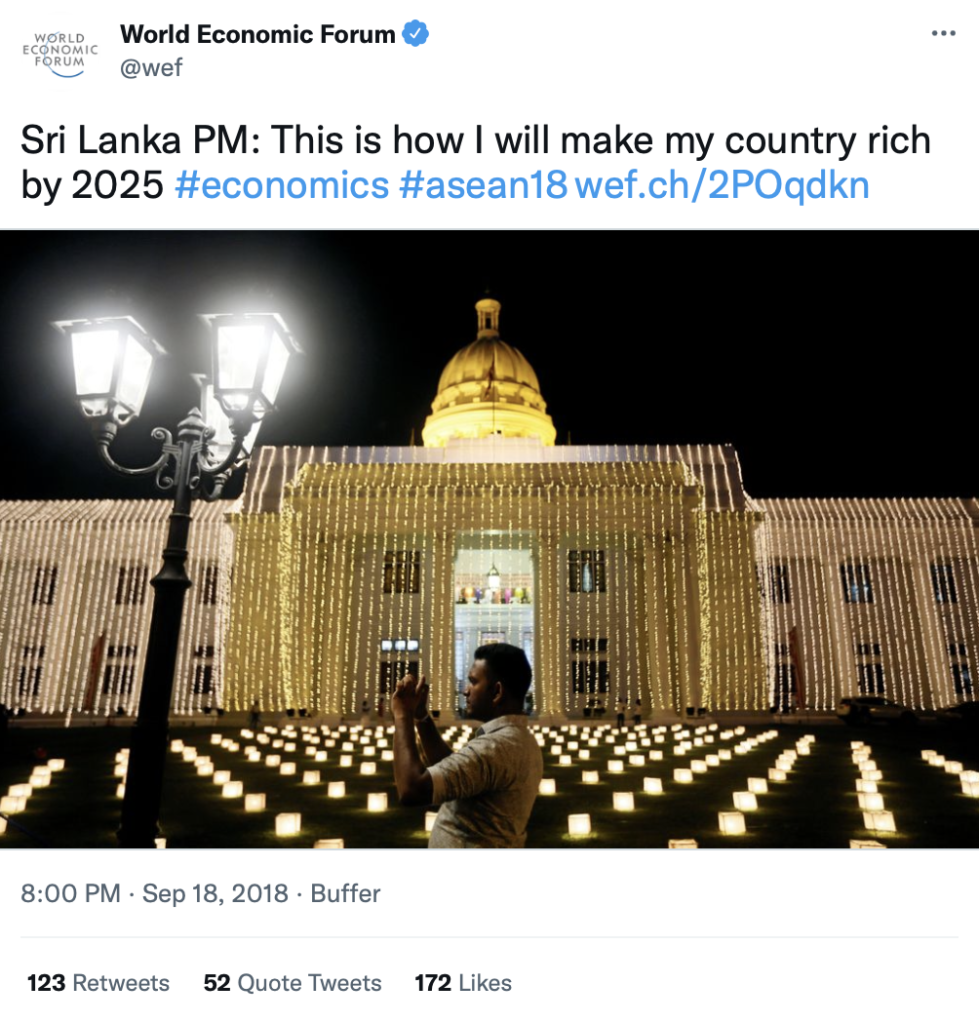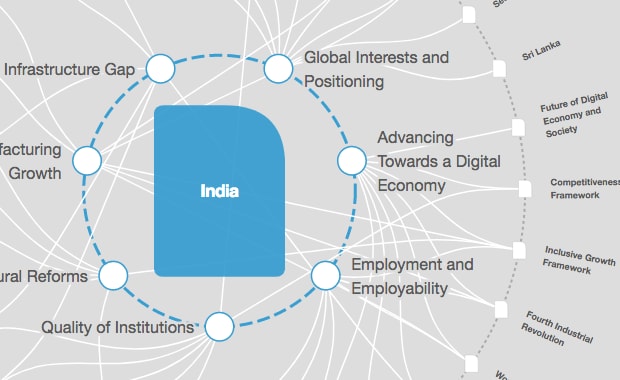DuterteNomics
DuterteNomics logo This article is part ofRodrigo Duterte
This article is part ofRodrigo Duterte
a series about
Early political career- Member of the House of Representatives from Davao City's 1st district
- Transition
- Inauguration
- first 100 days
- Administration and cabinet
- Major acts
- Executive orders
- War on drugs
- Proposed shift to federalism
- Impeachment efforts
Foreign policy- International trips
- Philippines v. China
- 2018 Kuwait–Philippines diplomatic crisis
- PH's withdrawal from the ICC
Speeches
Public image

DuterteNomics is a catch-all term referring to the socioeconomic policies of Rodrigo Duterte, the 16th president of the Philippines. A significant part of these policies include the development of infrastructure and industries in the Philippines.[1]
Background
Finance Secretary Carlos Dominguez III has said that the government required what he describes as an "audacious" economic strategy in order for the Philippines to "catch up with its more vibrant neighbors" by 2022 and help it achieve high-income economy status within a generation. The term DuterteNomics was coined to describe the economic policy of the Duterte administration. The term also refers to the series of forums where Duterte's economic team pitches the administration's plan to help the country become a high-middle-income economy by 2022.[2]
The policy was unveiled on April 18, 2017, by the Department of Finance and the Presidential Communications Operations Office (PCOO), in cooperation with the Center for Strategy, Enterprise and Intelligence (CenSEI) in a forum held at Conrad Manila in Pasay. A second forum was held on April 25, 2017.[2]
DuterteNomics was also pitched abroad, particularly at the 2017 World Economic Forum on the Association of Southeast Asian Nations in Cambodia and at the sidelines of the 2017 One Belt One Road Forum for International Cooperation in Beijing, China.[2]
Ten-point agenda
The economics team of then President-elect Rodrigo Duterte presented the following points of Duterte's socioeconomic policy in a business forum in Davao in June 2016.[3] DuterteNomics is anchored on these ten principles.[2]
- Continue and maintain current macroeconomic policies, including fiscal, monetary, and trade policies.
- Institute progressive tax reform and more effective tax collection, indexing taxes to inflation.
- Increase competitiveness and the ease of doing business.
- Accelerate annual infrastructure spending to account for 5% of GDP, with Public-Private Partnerships playing a key role.
- Promote rural and value chain development toward increasing agricultural and rural enterprise productivity and rural tourism.
- Ensure security of land tenure to encourage investments, and address bottlenecks in land management and titling agencies.
- Invest in human capital development, including health and education systems, and match skills and training.
- Promote science, technology, and the creative arts to enhance innovation and creative capacity.
- Improve social protection programs, including the government's Conditional Cash Transfer program.
- Strengthen implementation of the Responsible Parenthood and Reproductive Health Law.
Build! Build! Build! Program
Skyway Stage 3 construction along G. Araneta, Quezon CityPart of DuterteNomics is the Build! Build! Build! Infrastructure Plan which according to the administration will usher in the "Golden Age of Infrastructure". The goals of the program are to reduce poverty, encourage economic growth and reduce congestion in Metro Manila.[4][5] The program also involves the continuation of some projects under previous administrations.[6]
In November 2019, the government revised its list of flagship infrastructure projects under Duterte's "Build, Build, Build" program, expanding it to 100.[7][8] It was revised again in August 2020, bringing the total number of projects to 104, expanding its scope included health, information and communications technology, as well as water infrastructure projects to support the country's economic growth and recovery from the effects of the COVID-19 pandemic. As of September 11, 2020, 24 projects are still in the approval & planning stages, while 80 were under implementation.[9]
As of July 2021, 214 airport projects, 451 commercial social and tourism port projects, 29,264 kilometres (18,184 mi) of roads, 5,950 bridges, 11,340 flood control projects, 11,340 evacuation centers, and 150,149 classrooms had been completed under the infrastructure program.[10][11] The numbers cited include newly-built infrastructure, and projects involving the repair, rehabilitation, widening, and expansion of existing infrastructure.[12]
Economic trends
 This article needs to be updated. (June 2022)
This article needs to be updated. (June 2022)Economic outlook
In December 2017, government data revealed that the Philippines' output of nickel ore fell 16 percent in the third quarter from a year earlier, after the country, which is the world's top supplier of the metal, suspended some mines in a clampdown on environmental violations. Production dropped to 19.8 million tons in the nine months to September from 25.97 million tonnes a year ago, according to the data.[13] According to Finance Secretary Carlos Dominguez, the "Philippine economy is delivering the performance we anticipated, notwithstanding the political noise and a significant terrorist event in Mindanao". Dominguez gave the assessment during the Banyan Tree Leadership Forum of the Center for Strategic and International Studies.[14]
On March 31, 2018, the Financial Times reported that the export of the Philippines has continued its drastic drop for the fifth month in a row,[15] while the Philippine Statistics Authority reported that the trade deficit of the country has widened to 47.6%, endangering further the country's local economies.[16]
In October 2018, the World Bank downgraded the economic outlook of the Philippines for 2018, but expects it to remain strong.[17] FMIC and UA&P expect the economy to improve in the second half of 2018.[18] On October 24, the Philippines improved its ranking by 29 places in the Ease of Doing Business rankings.[19]
On November 2, 2018, the Philippines slipped 11 places from the World Bank's Ease of Doing Business rankings.[20][21] The Department of Finance is demanding a correction from the World Bank, citing the smaller data set used to assess the country's credit base.[22][23]
Inflation rate
On July 5, 2018, the inflation rate of the country soared to 5.2%, its highest in 5 years.[24] The inflation rate worsened the impacts of the government's new tax policy, increasing the price of all goods in the country.[25]
In September 2018, the inflation rate of the country further increased to 6.7%, its highest in a decade.[26][27] President Duterte blamed American president Donald Trump for the inflation increase.[28] Opposition Senator Francis Pangilinan, however, pointed out that if the United States was to blame, then all countries in ASEAN should have been experiencing the same, and only the Philippines had a very high inflation rate in the entire region at that time.[29] On September 21, 2018, Duterte signed Administrative Order No. 13, removing non-tariff barriers in the importation of agricultural products, to address soaring inflation rates.[30][31]
According to ING, with food prices decreasing, the worst of the inflation crisis is over.[32] Inflation decreased in November 2018, at 5.8 to 6.6 percent.[33] BSP decreased its inflation forecast for 2019, after the passage of the rice tariffication bill.[34]
Inflation stayed at 6.7 percent in October 2018, higher than expected.[35] July 2019 was met with a 2.4% inflation rate.[36] October 2019 received an 0.8% inflation rate, the lowest under Duterte.[37] However, this increased to 2.5% by December 2019.[38] and increased again to 2.7% by July 2020.[39]
Income and employment
Prior to the COVID-19 pandemic, economic managers predicted the accession of the Philippine economy to upper-middle-income status by 2019, citing massive infrastructure spending and robust growth.[40][41][42]
COVID-19 pandemic
Bangko Sentral ng Pilipinas (BSP) Governor Benjamin Diokno and then-NEDA Director-General Ernesto Pernia forecast that the Philippine economy would likely enter a recession in 2020 due to the effect of the pandemic. Diokno stated that, although the first quarter is likely to grow by 3% since the Luzon-wide enhanced community quarantine only took effect near the end of the quarter, the second and third quarters would likely experience contractions in economic growth.[43]
The unemployment rate of the country continued to follow a downward trend since 2005, however, it reached a record-high 17.7% in April 2020, where 1 in every 5 persons in the labor force are unemployed, accounting to 7.3 million jobless Filipinos.[44][45]
On the second quarter of 2020, the Philippine economy went into a recession for the first time in 29 years, where it shrank by 16.5%, which was one of the biggest falls in the Southeast Asian region. GDP fell by 9%. Seasonally adjusted GDP fell by 15.2 percent in the second quarter from the first three months of the year.[46]
The government expects an economic rebound by 2021, driven in part by the BBB infrastructure program.[47][48]
See also
References
- "Home". Build!. Archived from the original on June 22, 2017. Retrieved June 28, 2017.
- "TIMELINE for Duterte's economic agenda". The Manila Times. May 29, 2017. Archived from the original on June 23, 2017. Retrieved June 28, 2017.
- Macas, Trisha (June 20, 2016). "Duterte's economic team reveals 10-point socioeconomic agenda". GMA News. DVM, GMA News. Archived from the original on October 6, 2017. Retrieved June 28, 2017.
- "DuterteNomics unveiled". Presidential Communications Operations Office. April 19, 2017. Archived from the original on April 24, 2017. Retrieved June 28, 2017.
- Villar, Mark A. (September 13, 2021). "The ambitious 'Build, Build, Build' delivers". Philippine Daily Inquirer. Archived from the original on September 13, 2021. Retrieved September 24, 2021.
- Luna, Franco (November 14, 2019). "'Zero' infrastructure projects during Aquino administration? Not quite". The Philippine Star. Archived from the original on November 15, 2019. Retrieved September 18, 2020.
A separate list on the Official Gazette also tallies projects that were approved during the Aquino administration that were meant to alleviate traffic congestion and that were expected to be completed by the succeeding Duterte administration. ... Certain Aquino-era projects, such as the MRT-7 line, the Bicol International Airport, and NLEX Harbor Link Segments were also repurposed by the Duterte administration and are now listed among the high-impact priority projects under the "Build, Build, Build" program.
- de Guzman, Warren (November 14, 2019). "LIST: 100 projects under revised 'Build, Build, Build'". ABS-CBN News. Archived from the original on November 14, 2019. Retrieved December 3, 2019.
- "Recommended List of Projects for Inclusion in the Infrastructure Flagship Program" (PDF). ABS-CBN News. Archived from the original (PDF) on December 3, 2019. Retrieved December 3, 2019.
- "Longer list of 'Build, Build, Build' projects OKd". Public-Private Partnership Center. September 11, 2020. Archived from the original on January 12, 2021. Retrieved January 10, 2021.
- Lamentillo, Anna Mae Yu (July 21, 2021). "What has 'Build, Build, Build' achieved so far?". Manila Bulletin. Archived from the original on July 20, 2021. Retrieved July 21, 2021.
- Lamentillo, Anna Mae Yu (October 8, 2021). "Why do I support 'Build, Build, Build'?". Manila Bulletin. Retrieved October 22, 2021.
- "CONTEXT: Number of airports, seaports, bridges, roads in 'Duterte legacy' graphic". Rappler. January 22, 2020. Retrieved April 4, 2022.
- "Philippines third quarter nickel ore output drops 16 percent as Duterte's green clampdown bites". Reuters. December 5, 2016. Archived from the original on September 26, 2018. Retrieved October 24, 2018.
- "RP economy weathers political noise". ABS-CBN News. October 16, 2017. Archived from the original on September 26, 2018. Retrieved October 24, 2018.
- "Philippines exports decline for fifth month in May". Financial Times. Archived from the original on July 13, 2018. Retrieved July 17, 2018.
- "Philippines' trade deficit widens by 47.6% in May 2018". Rappler. Archived from the original on July 11, 2018. Retrieved July 17, 2018.
- "World Bank downgrades 2018 Philippine economic outlook". Rappler. Archived from the original on February 27, 2021. Retrieved January 12, 2021.
- "FMIC, UA&P: Philippine economy may 'rebound' in H2, but not without 'bumps'". The Philippine Star. Archived from the original on November 1, 2018. Retrieved October 12, 2018.
- "PH moves up 29 notches in global ease of doing business ranking". Manila Bulletin. Archived from the original on October 24, 2019. Retrieved October 24, 2019.
- "PH slips 11 notches in World Bank's ease of doing business ranking". Rappler. Archived from the original on November 2, 2018. Retrieved November 4, 2018.
- "Philippines ranking falls in Ease of Doing Business". The Philippine Star. Archived from the original on November 2, 2018. Retrieved November 4, 2018.
- "Philippines 'demanding a correction' from World Bank: Trade Sec Lopez". ABS-CBN News. Archived from the original on November 4, 2018. Retrieved November 4, 2018.
- "PHL protests Ease of Doing Business survey results, demands World Bank review of credit coverage data". BusinessMirror. Archived from the original on November 4, 2018. Retrieved November 4, 2018.
- "June 2018 inflation soars to 5.2%". Rappler. Archived from the original on July 13, 2018. Retrieved July 17, 2018.
- "Inflation jumps to new 5-year high in June, beats forecasts". The Philippine Star. Archived from the original on August 4, 2020. Retrieved July 17, 2018.
- "Inflation in September 2018 strains Filipinos' budget at 6.7%". Rappler. Archived from the original on October 5, 2018. Retrieved October 7, 2018.
- "Inflation soars to new 9-year high of 6.7% in September". The Philippine Star. Archived from the original on October 7, 2018. Retrieved October 24, 2018.
- Ropero, Gillan. "Duterte blames Trump for high inflation in PH". ABS-CBN News. Archived from the original on September 22, 2018. Retrieved October 24, 2019.
- "Pangilinan slams Duterte for blaming inflation on Trump". ABS-CBN News. Archived from the original on September 22, 2018. Retrieved October 24, 2019.
- "Inflation at 6.2 percent for third quarter of 2018: BSP". ABS-CBN News. Archived from the original on December 3, 2019. Retrieved October 20, 2018.
- "Duterte cuts red tape in importing agricultural products". Rappler. Archived from the original on October 20, 2018. Retrieved October 20, 2018.
- Lucas, Daxim L. "Worst is over for PH inflation crisis as food prices ease, ING says". Philippine Daily Inquirer. Archived from the original on October 27, 2018. Retrieved October 27, 2018.
- "Inflation likely at 5.8 to 6.6 percent in November: BSP". ABS-CBN News. Archived from the original on November 30, 2018. Retrieved November 30, 2018.
- "Bangko Sentral drastically lowers 2019 inflation outlook". ABS-CBN News. Archived from the original on November 30, 2018. Retrieved November 30, 2018.
- "Inflation stays at 6.7% in October, higher than officials' expectation". CNN Philippines. Archived from the original on January 10, 2021. Retrieved September 22, 2020.
- Gatpolintan, Leslie (August 5, 2020). "July inflation rate hits 2.7% as transport costs rise". Philippine News Agency. Archived from the original on September 29, 2020. Retrieved January 12, 2021.
- Esguerra, Darryl John (November 5, 2019). "Palace: With 'sound, working' Duterte economic policies, PH has slowest inflation in 3 years". Philippine Daily Inquirer. Archived from the original on November 5, 2019. Retrieved December 3, 2019.
- "December inflation fastest in six months". BusinessWorld. Archived from the original on August 7, 2020. Retrieved September 22, 2020.
- "Inflation quickens in July as transport prices rise". cnn. Archived from the original on September 25, 2020. Retrieved September 22, 2020.
- "Philippines set to become upper middle-income economy by 2019". Manila Standard. Archived from the original on October 12, 2018. Retrieved October 12, 2018.
- "Philippines to become upper-middle income country by 2019 – Pernia". Rappler. Archived from the original on October 12, 2018. Retrieved October 12, 2018.
- "PH to be upper-middle income country in 2019, Pernia says". ABS-CBN News. Archived from the original on October 12, 2018. Retrieved October 12, 2018.
- Noble, Luz Wendy; Laforga, Beatrice (March 30, 2020). "PHL may go into recession – Diokno". BusinessWorld. Archived from the original on March 30, 2020. Retrieved March 30, 2020.
- "In Duterte's 4th year, COVID-19 causes highest unemployment on record". Rappler. Archived from the original on October 5, 2020. Retrieved October 12, 2020.
- "PH unemployment at all-time high with 7.3 million jobless in April 2020". Rappler. Archived from the original on October 12, 2020. Retrieved October 12, 2020.
- "Philippine economy posts its biggest-ever quarterly plunge". www.aljazeera.com. Archived from the original on October 31, 2020. Retrieved October 12, 2020.
- Lucas, Daxim L. (August 25, 2020). "BSP: Early recovery signs point to strong 2021 economic rebound". Philippine Daily Inquirer. Archived from the original on July 3, 2021. Retrieved October 12, 2020.




